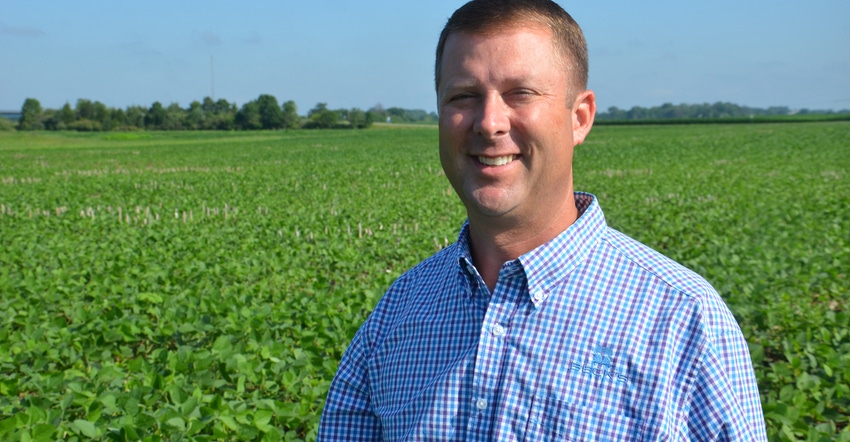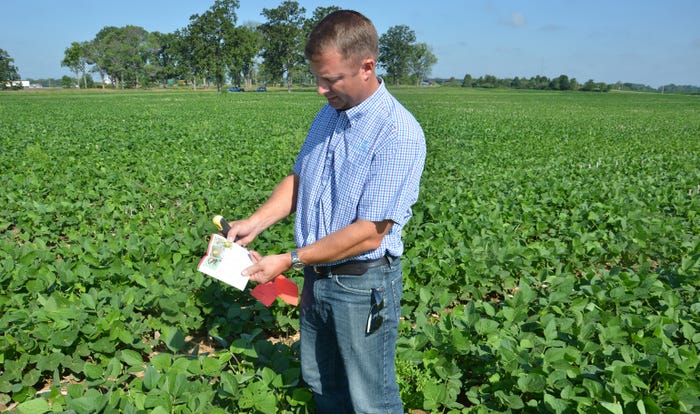
Since the Federal Aviation Administration rolled out a plan for farmers to get permits to fly drones in 2016, companies that make these aircraft have worked overtime on improving technology in anticipation of new crop scouting demands. Other companies supply software or services that stitch pictures taken by drones from the field into single images.
Still other entrepreneurs are developing aerial scouting services using everything from infrared images to thermal imaging. Meanwhile, Spensa Technologies, a startup firm in West Lafayette, Ind., makes “bug zappers” that wirelessly report catches of various moths.
Crop scouting is exploding. But for all the sophisticated technologies, cellphone apps and other advancements in the pipeline, agronomists insist each one has a missing ingredient: a knowledgeable person who can decipher what’s really going on. Technology can direct him or her where to look. But in the end, agronomists like Steve Gauck, a sales agronomist for Beck’s based in Greensburg, Ind., believe it takes someone with experience walking a field to make observations and decisions that can translate into yield-enhancing actions.
Case in point
Gauck scouted a field of soybeans in central Indiana every two weeks this season. Kevin Cavanaugh, Beck’s director of research, saw value in the project, called Soybean Watch ’17, and Beck’s sponsored it. The concept is simple. If problems develop in one field, they just might show up in yours.
Perhaps the iconic moment was during the last week of June. There were no drone flights or scouting reports. There were only windshield surveys. From the road, things looked OK. Once in the field, Gauck found symptoms of slug damage. They had thinned stands, but his experience told him that if there were 80,000 plants left, the stand was worth leaving, Even the worst spots had 80,000 plants.
To confirm his suspicions, Gauck pulled out a well-worn copy of the printed version of the Purdue University Corn & Soybean Field Guide, and made the right diagnosis on the spot. Yes, tablet versions of the field guide are available. There’s even a cellphone app. But Gauck felt comfortable with his paper guide — he knew where to look and what he was looking for. It’s knowledge that matters, he says, no matter what technology you use.
Knowledge matters
The photo below wasn’t a staged shot. No one asked Gauck to pull out the manual. That’s how he checks himself and confirms his suspicions. Scouting information, even on paper, is valuable in the hands of someone who knows how to use it.
 FIELD GUIDE: If you don’t know the answer, the key is knowing where to get it. Steve Gauck still uses a printed Purdue field guide to find his answers.
FIELD GUIDE: If you don’t know the answer, the key is knowing where to get it. Steve Gauck still uses a printed Purdue field guide to find his answers.

Several miles away, Dave Nanda did similar things in the Corn Watch ’17 field. The independent crops consultant and longtime plant breeder knows what to look for from experience, but if necessary, he pulls out his own resources. Maybe you didn’t find corn borers in your fields, but he did in this one. There was considerable feeding in a hybrid without Bt protection. Without walking fields, no one would have known they were there. Seed Genetics-Direct, Washington Court House, Ohio, sponsored Corn Watch ’17.
So here’s to technology. But here’s also to the companies, consultants, agronomists and farmers who made these exercises in scouting, and the Soybean Watch and Corn Watch programs, successful.
Read more about the results of Corn Watch ’17, and watch the website for the latest on Soybean Watch ’17 in a few days.
About the Author(s)
You May Also Like




